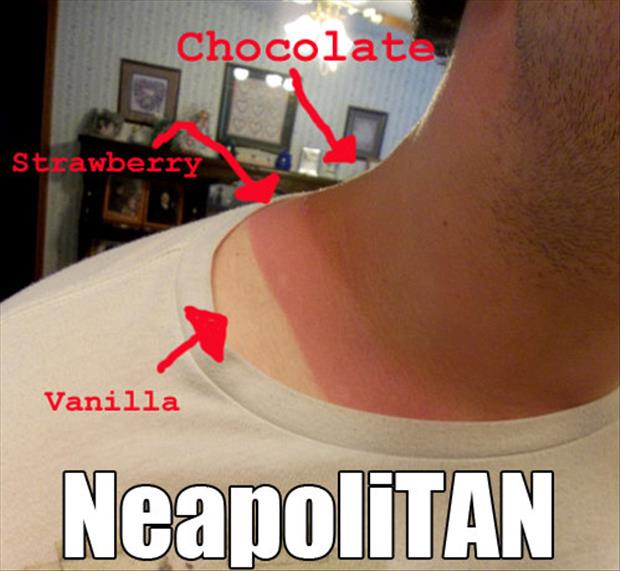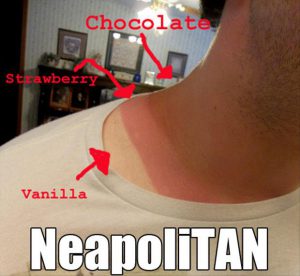
by Claire Davis | Mar 1, 2025
As the warmer months approach, many of us can’t wait to spend time outdoors with our loved ones, enjoying the sunshine and making lasting memories. Whether you’re planning a family vacation to the beach or mountains, a backyard BBQ with friends and family, or a simple picnic in the park, the outdoors offers endless possibilities for fun and adventure. However, as we bask in the sun’s warm rays, it’s essential to remember the importance of sun safety.
Sun safety should be at the top of your priority list, just as you would prioritize packing sunscreen, comfortable clothing, and bug spray for your outdoor excursion. Exposure to the sun’s ultraviolet (UV) rays can increase the risk of skin cancer, premature aging, and other health issues, making it crucial to take proactive steps to protect your skin. The sun’s UV rays can penetrate clouds, glass, and even water, making it difficult to avoid exposure altogether. In fact, the American Academy of Dermatology estimates that one in five Americans will develop skin cancer by the age of 70, making sun safety a critical consideration for individuals of all ages.
In this article, we’ll explore the importance of sun safety and provide you with practical tips to protect your family’s skin. We’ll cover the risks associated with UV exposure, discuss the benefits of sun-protective clothing and accessories, and offer advice on how to choose the right sunscreen for your family’s needs. By the end of this article, you’ll be equipped with the knowledge and strategies necessary to ensure a safe and enjoyable outdoor experience for everyone.
The Risks of UV Exposure:
UV radiation from the sun or tanning beds can cause damage to your skin in just a few minutes. Prolonged exposure can lead to:
1. Skin Cancer: Melanoma, the deadliest form of skin cancer, is on the rise worldwide. According to the Skin Cancer Foundation, one in five Americans will develop skin cancer by the age of 70.
2. Premature Aging: UV exposure can cause wrinkles, fine lines, and age spots, making your skin look older than it is.
3. Eye Damage: UV rays can cause cataracts, macular degeneration, and eye irritation.
4. Weakened Immune System: UV exposure can weaken your immune system, making you more susceptible to illnesses.
Practical Tips for Sun Safety:

Proper sunscreen application is essential to protect skin from harmful UV rays. (Photo source: Adobe Stock)
1. “Slip, Slop, Slap”: Use these three simple words to remember how to protect your skin: Slip on a shirt, hat, or other protective clothing; Slop on a broad-spectrum sunscreen with a Sun Protection Factor (SPF) of 30 or higher; and Slap on a lip balm with SPF.
2. Seek Shade: Whenever possible, seek shade, especially during peak sun hours (10 am – 4 pm).
3. Wear Protective Clothing: Choose clothing with a tight weave, as loose weaves can allow UV rays to pass through. Look for clothing with a UPF (Ultraviolet Protection Factor) rating of 50+.
4. Use a Sunscreen: Apply sunscreen 15-30 minutes before going outside and reapply every two hours or immediately after swimming or sweating. Choose a broad-spectrum sunscreen with a SPF of 30 or higher.
5. Don’t Forget Your Eyes: Wear sunglasses with UV protection to prevent eye damage.
6. Check the UV Index: Plan your outdoor activities according to the UV index, which is a measure of the sun’s ultraviolet radiation.
Additional Tips for Families:
1. Make Sun Safety a Family Affair: Educate your children about the importance of sun safety and involve them in the process of protecting their skin.
2. Create a Sun Safety Routine: Develop a routine that includes applying sunscreen, wearing protective clothing, and seeking shade.
3. Be Mindful of Reflective Surfaces: Be aware of reflective surfaces like water, sand, and snow, which can increase UV exposure.
4. Don’t Rely on Clouds: Up to 80% of the sun’s UV rays can pass through clouds, so don’t rely on clouds to protect your skin.
By following these practical tips and making sun safety a priority, you can protect your family’s skin and reduce the risk of skin cancer, premature aging, and other health issues. Remember, sun safety is a habit that’s easy to develop and maintain, and it’s worth it to protect the ones you care about!
An Equal Opportunity Institution
NOTE: During the preparation of this work the author used the AI tool NaviGator to create an outline for this article. After using this service, the author reviewed and edited the content as needed and takes full responsibility for the content of the publication.

by Samantha Kennedy | Jul 16, 2020
An abundance of sunshine is one of the many reasons why so many people love Florida. In fact, it is why we are known as “The Sunshine State.” However, while the sunny days provide tons of opportunities to enjoy the great outdoors, too much sun exposure can lead to minor injury, serious illness, or even death.
The harsh UV rays from the sun can begin to damage the skin in as little as 15 minutes. In fact, even if the skin is not outwardly burned, it may be damaged underneath. Continued unprotected short-term exposure adds up over time, leading to more serious skin damage such as melanoma.

Sunscreen, ample water, and a good hat are all excellent precautions against problems with the summer sun. (Photo source: Samantha Kennedy)
Adopting a few sun safety practices greatly reduces the risk of serious skin damage. One simple practice is the daily application of sunscreen, even on cloudy days, as UV rays can penetrate cloud cover. A minimum Sun Protection Factor (SPF) of 15 is recommended for exposed skin, including lips. Do not use sunscreen past its expiration date, as it may not be as effective.
Eyes should be protected as well, as prolonged exposure to the sun can lead to vision loss or even blindness. Sunglasses which protect against both UVA and UVB rays offer the best protection. Wraparound sunglasses offer the most comprehensive protection of both the eyes and the tender skin surrounding them.
Cover other exposed skin as much as possible with dry, loose-fitting clothing whenever possible, on top of wearing sunscreen. Reapply sunscreen every two hours, especially during continuous sun exposure and after swimming, sweating, and toweling off.
Children under one year of age should be kept out of the sun as much as possible. Keep babies in the shade of a tree, umbrella, or stroller canopy at all times. Older children should follow the same precautions as those given above. Keep in mind, very young children cannot state it is too bright or too hot, so be extra vigilant.
Staying cool and hydrated is also important during those hot summer days. Even those who are acclimated to the climate can easily fall into the dangerous trap of dehydration and overheating. Paying attention to the body’s needs will help prevent heat stress and more serious heat-related illness.
The sun is at its hottest and most brutal between the hours of 10 a.m. and 4 p.m. Reducing outdoor activities between these hours can help reduce the risk of overheating. If this is impossible, be sure to take frequent breaks in a cool, shady spot to help maintain proper body temperature.
Lightweight, light-colored clothing reflects heat better than heavier, darker colors. Hats with wide brims going all the way around are ideal and offer more protection to the ears, neck, and scalp. Baseball caps are fine, but be sure to use a cloth in the back that drapes over exposed skin for more protection.
Drink plenty of fluids constantly. Plain water is the best choice to maintain proper hydration. Avoid alcohol, caffeine, and high amounts of sugar, as these can promote water loss, leading to dehydration. Find a shady spot or an air conditioned space to retreat to periodically throughout the day to keep from overheating.
Some symptoms of heat exhaustion include excessive sweating, confusion, dizziness, weakness, and nausea. Seek shade or air conditioning immediately.
Anyone experiencing an elevated body temperature, hot and dry skin, continued nausea or vomiting, and/or loss of consciousness may be suffering from heat stroke or other severe heat-related illness. Seek medical attention right away.
Florida’s sunshine draws millions of visitors a year. But for visitors and residents alike, it can be dangerous without the proper precautions. By being sun smart, the dog days of Florida’s summer will not take a bite out of the fun.
Resources:
Be Safe in the Sun (American Cancer Society)
Sun Safety (Centers for Disease Control and Prevention)
UF/IFAS is an Equal Opportunity Institution.

by Marie Arick | May 19, 2016

Photo credit: dumpaday.com
May 27, 2016, the Friday before Memorial Day is “Don’t Fry Day.” The “Don’t Fry Day” campaign is meant to spread awareness of the relationship between sun exposure and skin cancer. According to the National Council on Skin Cancer Prevention, every hour, one person dies of melanoma. With summer fast approaching, we all need to adopt sun safety practices if we are not doing so already. Skin cancer is predominately a lifestyle disease, making it highly preventable. According to the Skin Cancer Foundation, “about 90 percent of non-melanoma skin cancers are associated with exposure to ultraviolet (UV) radiation from the sun.” If the outdoors is where you want to be, then be sun safe. Apply sunscreen with a Sun Protection Factor (SPF) of 15 or more at least 30 minutes prior to going outdoors and reapply as directed by the label. Sun protection has become a very important health issue. The following are some prevention guidelines provided by the Skin Cancer Foundation:
- Seek the shade, especially between 10 AM and 4 PM.
- Do not burn.
- Avoid tanning and UV tanning booths.
- Cover up with clothing, including a broad-brimmed hat and UV-blocking sunglasses.
- Use a broad spectrum (UVA/UVB) sunscreen with an SPF of 15 or higher every day. For extended outdoor activity, use a water-resistant, broad spectrum (UVA/UVB) sunscreen with an SPF of 30 or higher.
- Apply 1 ounce (2 tablespoons) of sunscreen to your entire body 30 minutes before going outside. Reapply every two hours or immediately after swimming or excessive sweating.
- Keep newborns out of the sun. Sunscreens should be used on babies over the age of six months.
- Examine your skin head-to-toe every month.
- See your physician every year for a professional skin exam.
Enjoying the outdoors is a wonderful thing, but even better is to do so responsibly when it comes to sun safety and skin cancer prevention. Slip on a shirt and use generous amounts of sunscreen. Wear a hat that provides ample protection of the face and neck. Lastly, protect the eyes with sunglasses. Pay attention to your skin and check often to avoid sunburn. Remember, lifestyle is strongly linked to skin cancer risk, and it is never too late to adopt these practices. Enjoy your summer outdoors by adopting safe sun practices and avoiding overexposures that lead to sunburns and potential health issues later in life.






